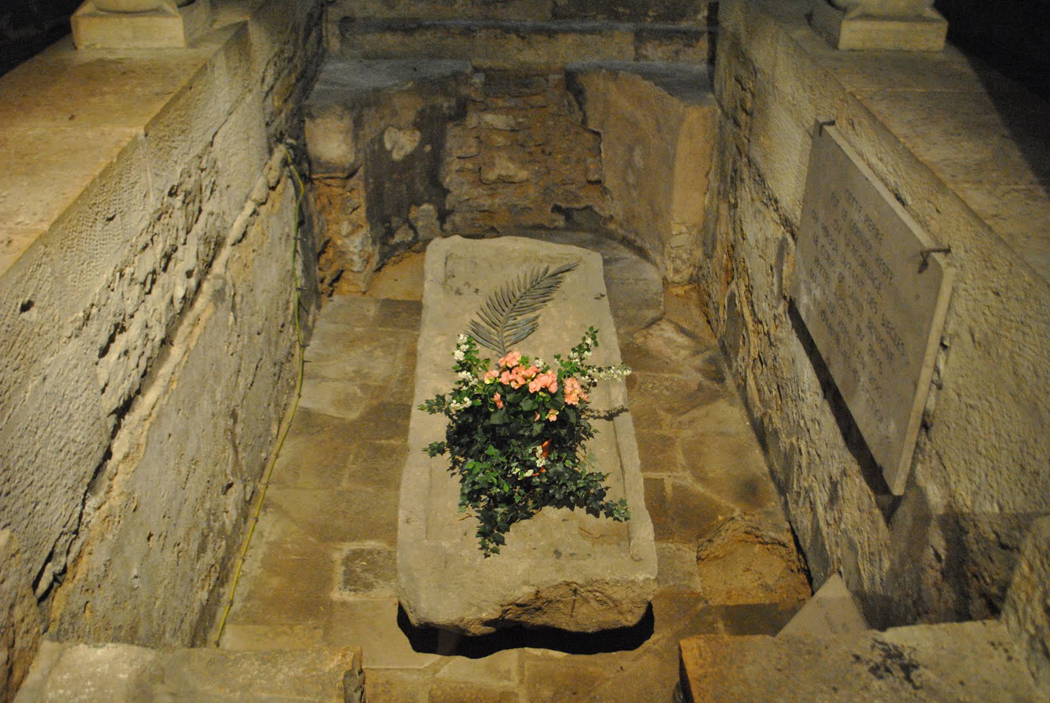Saint Benignus was the patron saint of Dijon. A new book tells the story about the former abbey, now cathedral in Dijon, which was dedicated to him since the 6th century.

Saint Benignus of Dijon was a martyr honoured as the patron saint of Dijon. His feast falls on November I (All Saints). It is told that he was martyred at Epagny in AD 270 -75. However, in reality nothing precise is known about him.
According to Gregory of Tours there was a large sarcophagus located outside Dijon. This grave was revered by ordinary people and was the scene of at least one minor miracle. The bishop of Langres (Saint Gregory 507 – 539/40) tried to put a stop to this as he considered the grave pagan; however, in a dream the bishop had a vision of the martyr Benignus, who revealed that he was the one buried in the sarcophagus. Accordingly Gregory went about renovating an adjacent crypt, into which he moved the tomb. Soon after an account of the martyrdom of Benignus – the Passio Sancti Benigni – was discovered in Italy and the bishop had a large basilica built on the site, completed in 535; this functioned as the centre of an early monastic community. In 871 this was re-founded as a Benedictine abbey, which subsequently was joined with the Cluniac order (989).
Around AD 1000 the basilica was superseded by a larger church, built by William of Volpiano († 1031). This was replaced by an early Romanesque church, which collapsed in 1271. The present Dijon Cathedral, finished in 1325 and consecrated in 1393, still holds the sarcophagus in the crypt. This was excavated in the 19th century.
Saint Benignus

he passio is preserved in several texts and is generally believed to have been edited at the time of Gregory of Tours. According to the passio, St. Polycarp had a vision of Irenaeus ordering two priests, Benignus and Andiochus to preach the gospel in Gaul. Shipwrecked on Corsica, the were joined by St. Andoleus there. Later they reached Marseilles from where Benignus went to first Auton and later Langres and Dijon. Shortly after this he was arrested at Epagny, tortured and finally died. He was buried in a tomb, which was disguised as a pagan monument in order to deceive the persecutors of his cult. It is believed the passio was part of a series of religious romances, written in the first half of the sixth century in order to describe the origins of the churches of Auton, Besançon, Langres and Valence in Eastern France. There exists a versified “Carmina de vita sancti Benigni” from the 11th century.
A new book tells the story of the Abbey and the practical and spiritual life of the Abbey from its earliest beginnings and until the revolution. The book is heavily illustrated and tells the full story. Another book is in preparation, telling the story of how the Abbey-church turned Cathedral in the 19th century.
 L’abbaye Saint-Bénigne de Dijon
L’abbaye Saint-Bénigne de Dijon
by Jean-Pierre Roze
Editions Universitaires de Dijon 2014
ISBN-10: 2364411068
ISBN-13: 978-2364411067
